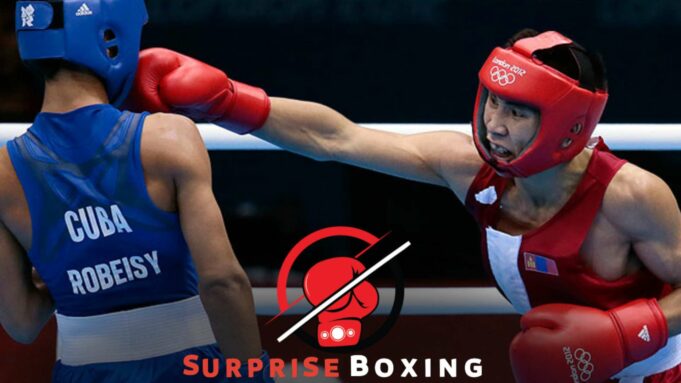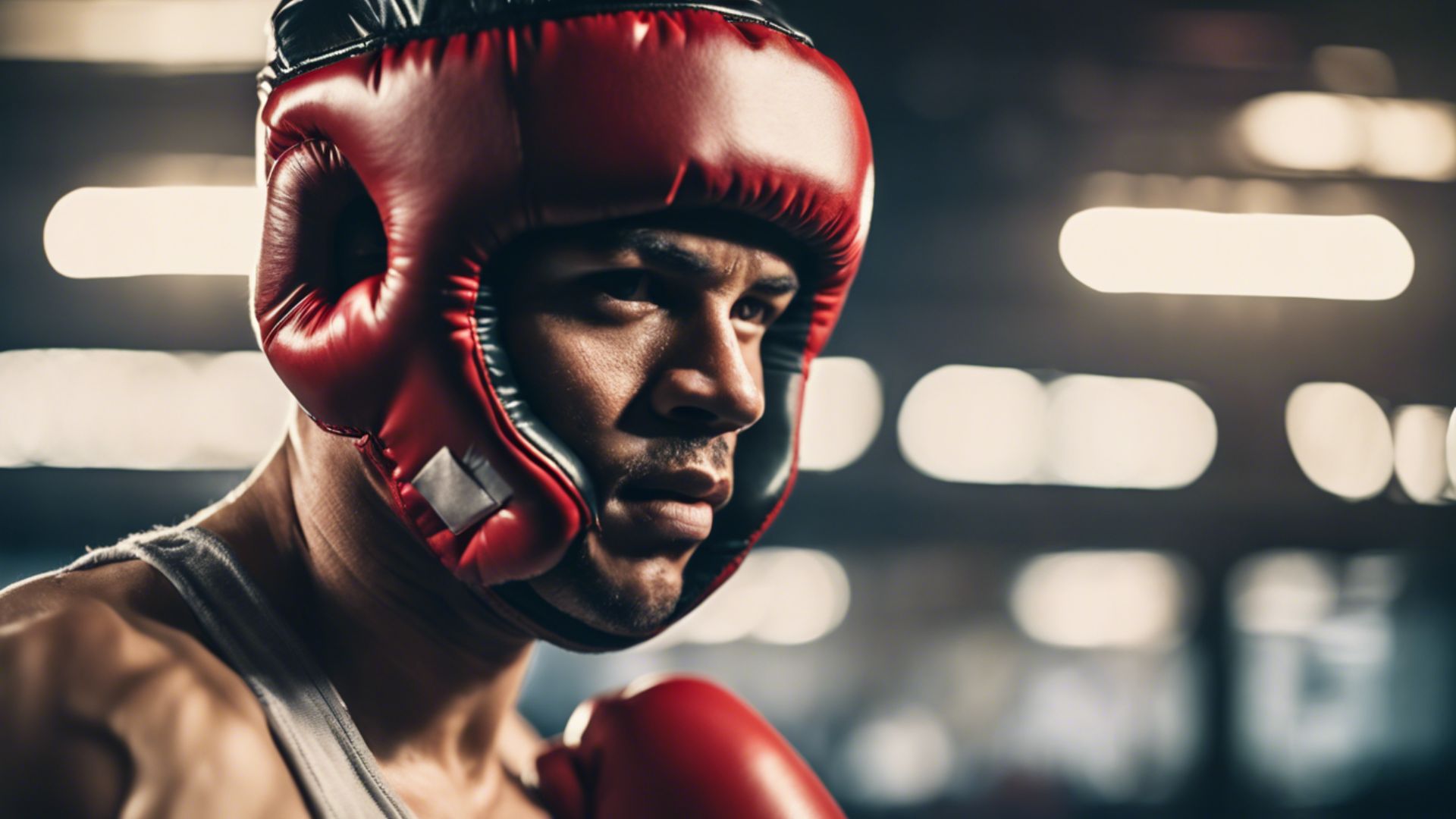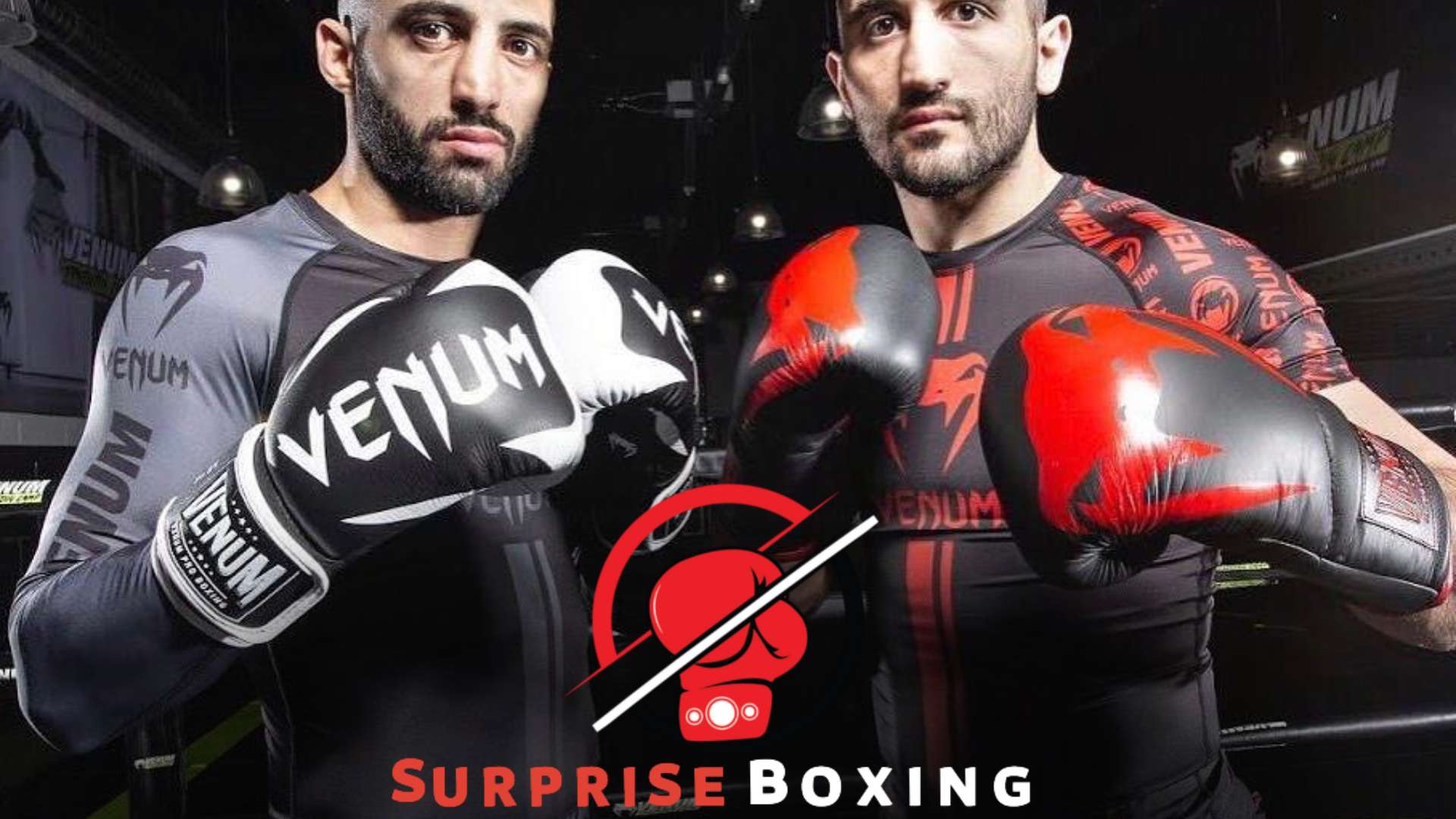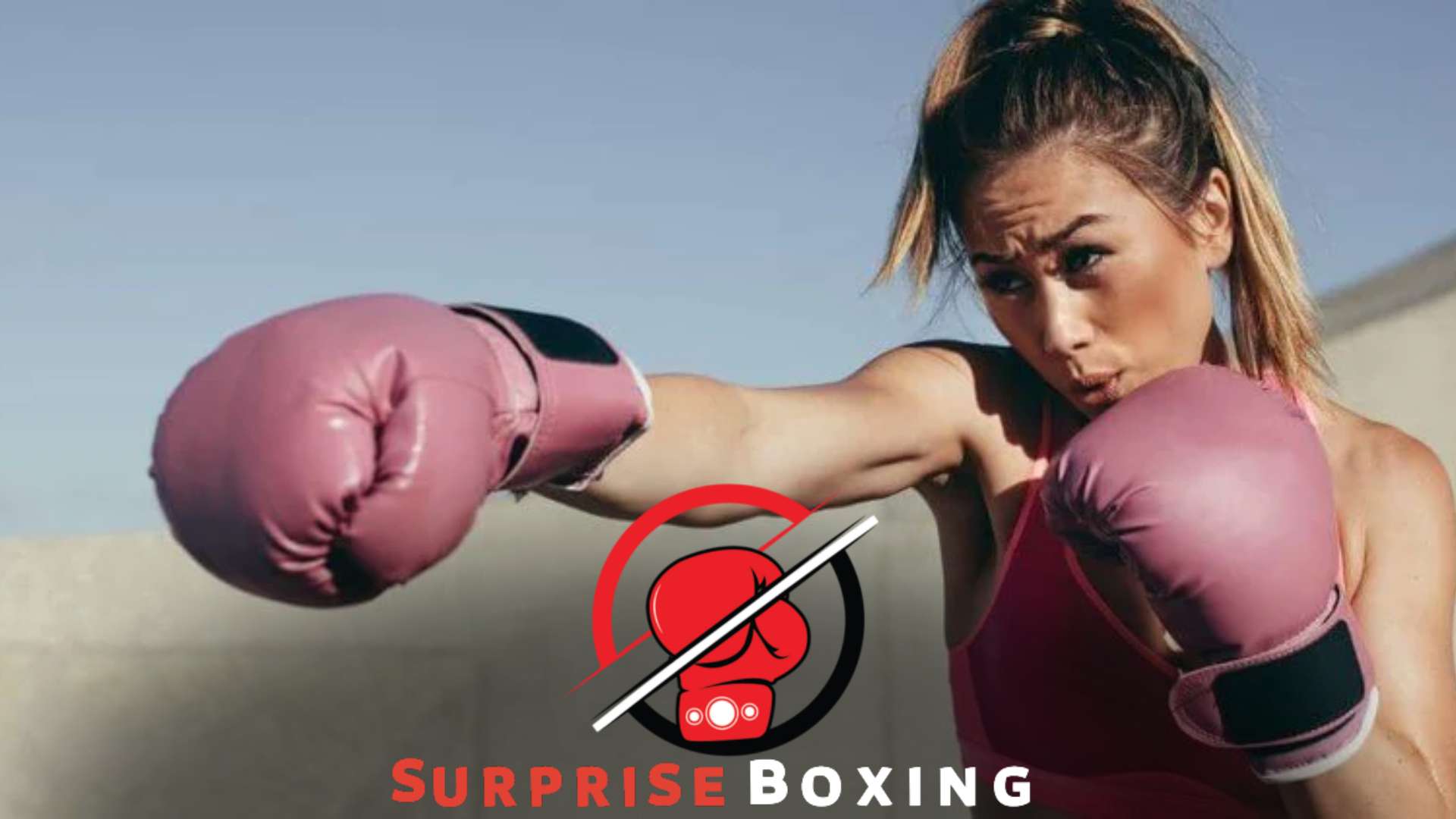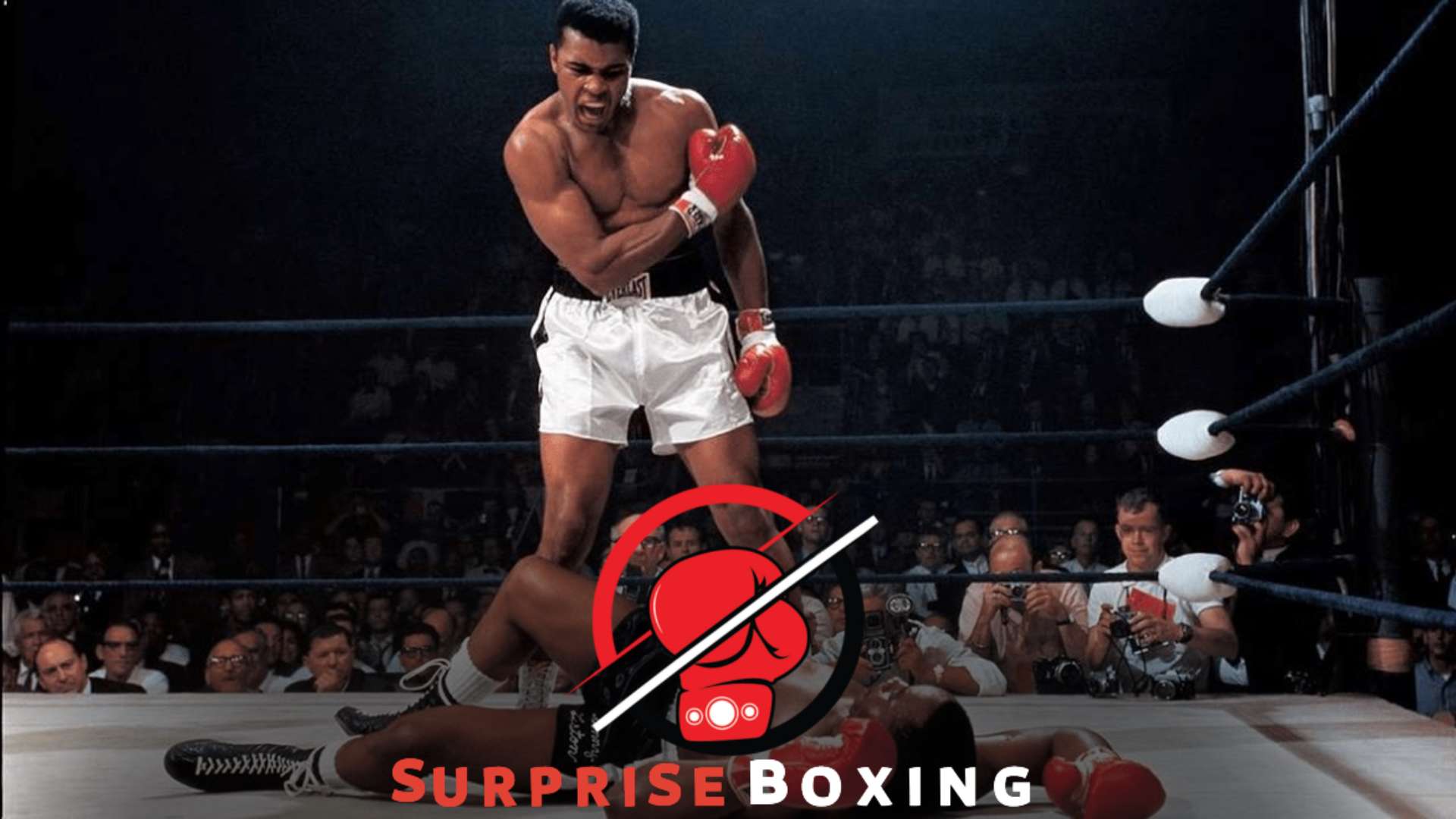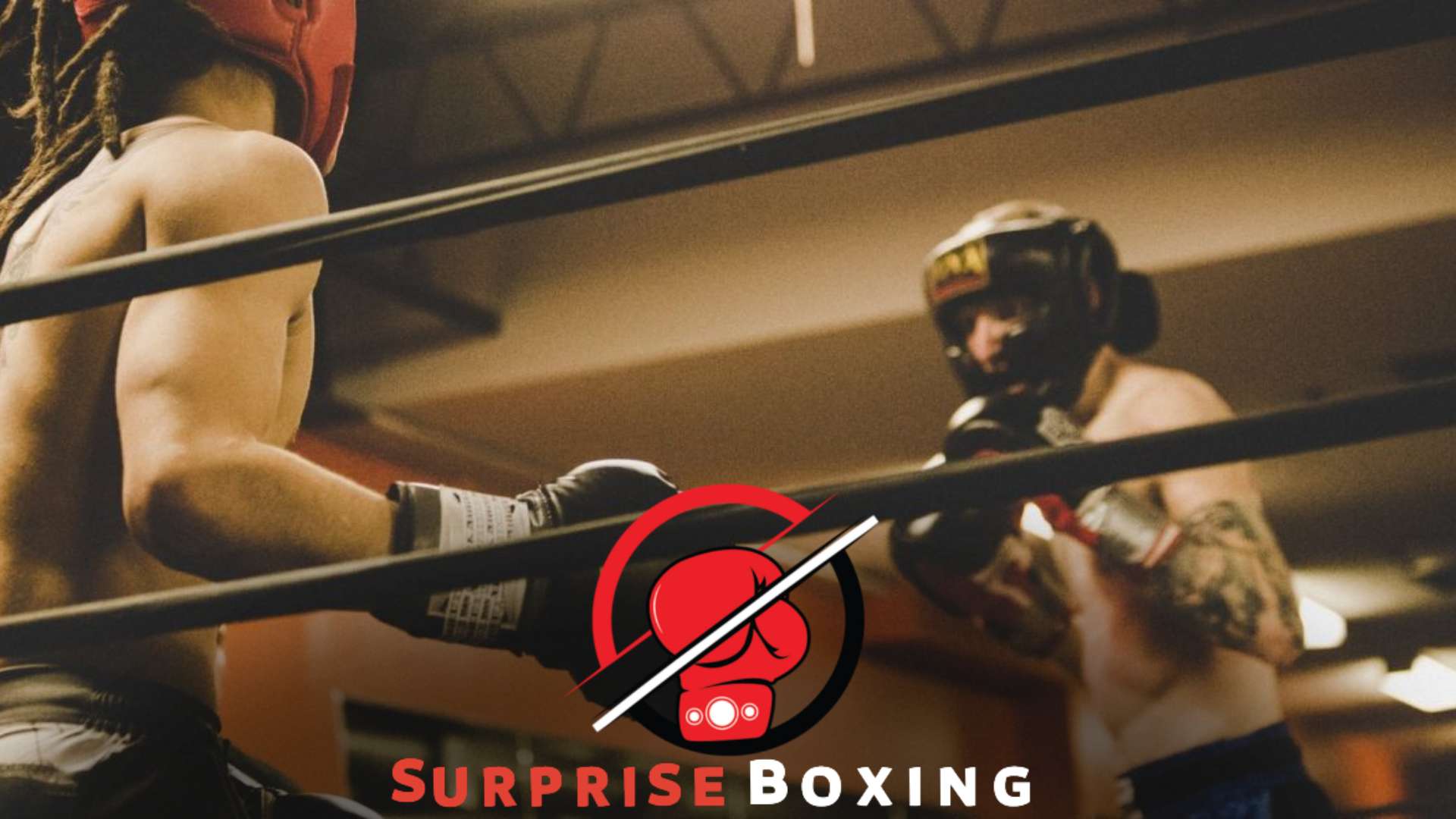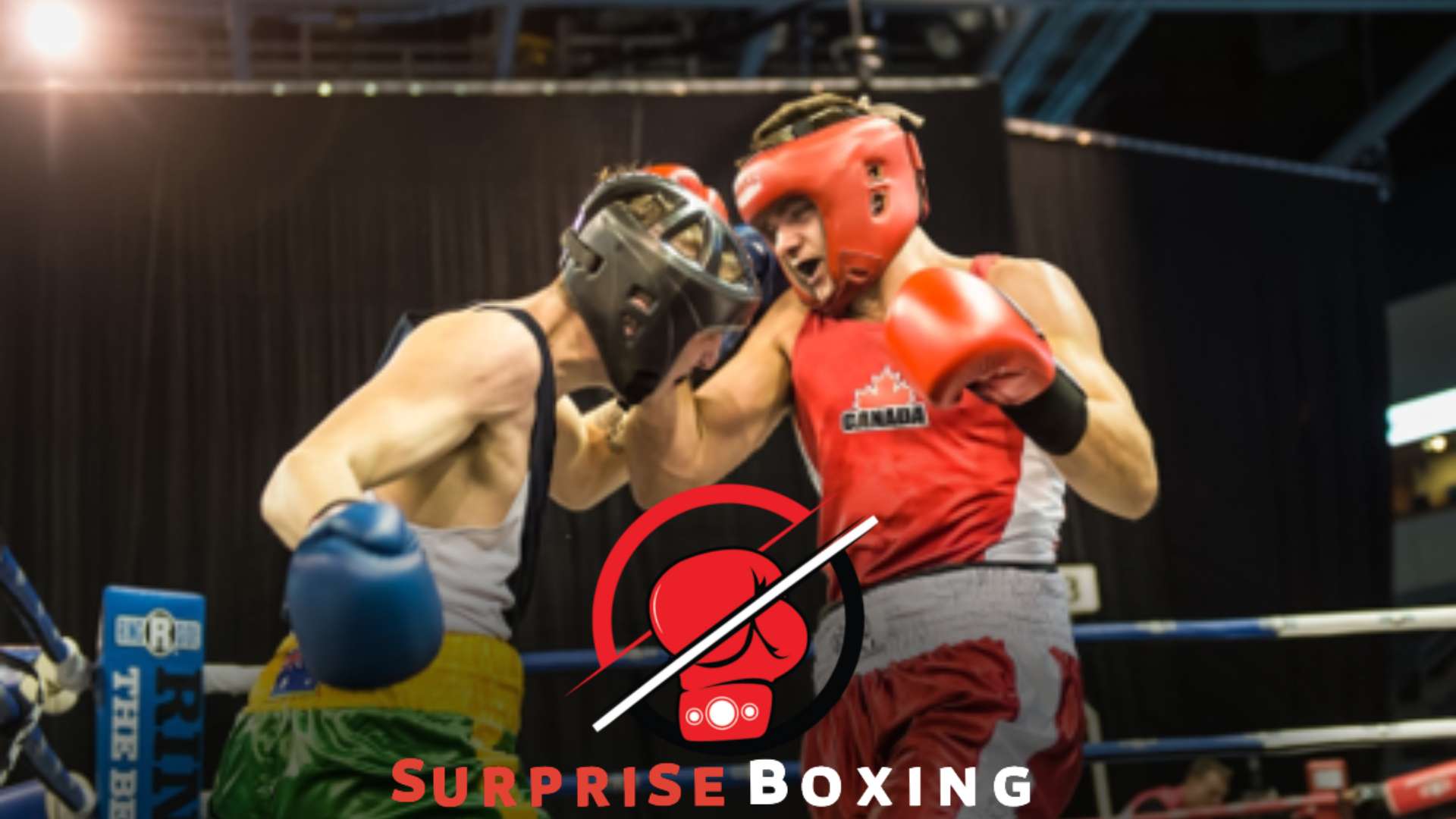Yes, headgear must typically be worn during boxing matches for safety purposes. In addition to protecting the head and face from potential injuries, headgear can also help absorb and distribute the impact of punches.
However, there may be cases where headgear is not mandatory, such as during professional bouts where the boxers have agreed to compete without headgear. It is essential to follow the rules and regulations set by the specific boxing organization or governing body to ensure the safety of all participants.
Remember, the primary goal is to protect the boxers from unnecessary harm during their matches.
Understanding Boxing Headgear: Types, Designs, Materials, Benefits, and Limitations

Boxing headgear is crucial in safeguarding the head and reducing the risk of injuries. Although not mandatory, wearing headgear provides essential protection during boxing sessions, making it advisable not to take it off while training or competing.
Understanding the different types, designs, materials, benefits, and limitations of headgear is vital for every boxer’s safety.
Boxing is undoubtedly an intense and physically demanding sport that requires participants to be agile, quick-thinking, and have lightning-fast reflexes. As such, safety becomes a paramount concern for amateur and professional boxers. One crucial safety measure that fighters often rely on is headgear.
This section will delve into the various aspects of boxing headgear, including its types, designs, materials, benefits, and limitations, to help you understand its significance in boxing.
Types of Boxing Headgear
- Full-face headgear: This type of headgear offers complete protection to all areas of the face, including the eyes, nose, and cheeks. It is often preferred by beginners and fighters who prioritize maximum safety.
- Open-face headgear: As the name suggests, this headgear leaves the face exposed, providing better visibility but sacrificing some protection. It is commonly used by experienced boxers and professionals who rely heavily on their vision and must respond quickly to their opponent’s movements.
Designs of Boxing Headgear
- Traditional design: Traditional boxing headgear features a classic design that covers the skull and extends towards the cheeks, jawline, and chin. Its purpose is to minimize the impact and distribute the force of a punch more evenly, reducing the risk of severe injuries.
- The cheek protector: The design includes additional padding around the cheekbones, protecting against potential facial injuries. It is often favored by fighters who anticipate punches directed toward the sides of their face.
Materials Used in Boxing Headgear
- Leather: Leather is a popular material due to its durability and ability to withstand repeated impacts. It also offers a comfortable fit, ensures breathability, and allows easy cleaning.
- Synthetic materials: Many boxing headgear options utilize vinyl or synthetic leather. These materials are lightweight, affordable, and can still provide adequate protection and durability.
Benefits of Boxing Headgear
- Protection against impact: The primary objective of boxing headgear is to absorb and distribute the force of punches, reducing the likelihood of severe head injuries such as concussions.
- Facial protection: Headgear with full-face or cheek protector designs adds an extra layer of defense, safeguarding delicate facial structures from cuts, bruises, and fractures.
Limitations of Boxing Headgear
- Restricted vision: While open-face headgear offers better visibility, full-face options may limit peripheral vision. This can hinder a boxer’s ability to swiftly anticipate and react to their opponent’s movements.
- False sense of security: It’s essential to note that even with high-quality headgear, boxing remains a contact sport. Overreliance on headgear may lead to a false sense of security, prompting boxers to neglect proper defensive techniques that can mitigate injuries.
Boxing headgear is crucial in safeguarding boxers during their matches and training sessions. Choosing the appropriate type, design, and material that suits the individual boxer’s needs ensures a balance between protection and comfort. Remember, while headgear offers valuable protection, impeccable technique and a focus on safety should always remain at the forefront of every boxer’s training.
The Debate Surrounding Headgear in Boxing: Exploring its Efficacy in Preventing Injuries, Impact on Fighter Performance, and the Controversy Over Mandating Usage
The efficacy of headgear in preventing injuries and its impact on fighter performance is a hot topic in the boxing community. The controversy surrounding mandating the usage of headgear has sparked debates on whether fighters should be allowed to take it off.
Experts and enthusiasts alike have long debated the efficacy of headgear in boxing. This seemingly innocent piece of protective gear has sparked numerous discussions surrounding its ability to prevent injuries, its impact on fighter performance, and the controversy over mandating its usage.
We will delve into the heart of the matter and explore the different aspects of this ongoing debate.
The Debate Surrounding Headgear in Boxing
Effectiveness in preventing injuries:
- Headgear is commonly believed to protect boxers from head and facial injuries.
- Headgear can reduce the risk of superficial injuries such as cuts and bruises.
- However, there is a lack of conclusive evidence regarding the reduction of concussions and traumatic brain injuries.
Impact on fighter performance:
- Opponents argue that headgear can impair a boxer’s vision, hearing, and overall mobility.
- It is believed that headgear can create a false sense of security, leading to riskier fighting techniques.
- Proponents claim that headgear provides psychological reassurance, allowing boxers to focus more on their strategy and technique.
Controversy over mandating usage:
- While headgear has been mandatory in amateur boxing for decades, there is ongoing debate about whether it should be required in professional bouts.
- Critics argue that mandating headgear may promote a less disciplined boxing style, encouraging fighters to take more hits.
- Supporters maintain that headgear should always be mandatory to protect the health and safety of fighters, regardless of the level of competition.
As the discussion surrounding headgear in boxing continues, it is crucial to consider the available evidence, research, and expert opinions. Striking a balance between safety and performance is vital for the fighters’ well-being and the sport’s integrity.
The Debate Surrounding Headgear in Boxing: Assessing the Efficacy, Controversies, and Impact on Fighter Safety
The debate surrounding headgear in boxing revolves around assessing its efficacy, controversies, and impact on fighter safety. Can you take off headgear for boxing? This contentious issue sparks discussions on the pros and cons, weighing the potential benefits of increased visibility and reduced head trauma against the risks of possible injuries.
As boxing continues to captivate sports enthusiasts and casual viewers alike, the debate surrounding the use of headgear in the sport has been a hot topic of discussion. While headgear has long been viewed as a protective measure for fighters, its efficacy, controversies, and impact on fighter safety have been scrutinized recently.
In this section, we will examine and evaluate the various aspects surrounding headgear in boxing.
The Efficacy of Headgear in Boxing
- Headgear is commonly believed to protect boxers during matches. However, its effectiveness in preventing concussions and head injuries is a matter of debate.
- Supporters of headgear argue that it reduces the impact of blows, minimizes cuts and bruises, and provides cushioning for the head.
- On the other hand, opponents argue that headgear may increase the risk of certain types of injuries, such as rotational brain injuries, due to the added weight and increased head movement caused by the gear.
Controversies Surrounding Headgear in Boxing
- Throughout the boxing community, there are various controversies surrounding the use of headgear, with some believing that it should be mandatory while others argue for its elimination altogether.
- One controversy revolves around the belief that headgear may provide a false sense of security for fighters, leading them to engage in riskier behavior and increased head trauma.
- Another controversy stems from the notion that headgear may interfere with a boxer’s vision and peripheral awareness, potentially impairing their ability to react to punches and avoid strikes.
The Impact on Fighter Safety
- Fighter safety is paramount in boxing, and understanding the impact of headgear on this aspect is crucial.
- Proponents of headgear argue that its use can potentially reduce the severity of injuries sustained during matches, therefore enhancing fighter safety.
- Conversely, opponents of headgear emphasize the need for improved training methods and stricter regulations to enhance fighter safety rather than relying solely on headgear.
In the ongoing debate surrounding headgear in boxing, assessing its efficacy, controversies, and impact on fighter safety is essential. While headgear was initially introduced to protect boxers from head injuries, its effectiveness and implications are still the subject of intense discussion within the boxing community.
As our understanding of the potential risks and benefits evolves, further research and open dialogue will continue to shape the future role of headgear in boxing.
Boxing Safety Regulations and Rules: Ensuring Fighter Safety Inside the Ring
To ensure fighter safety inside the ring, boxing safety regulations require fighters to wear headgear during matches. Removing headgear is not allowed as it exposes soldiers to potential head injuries and increases the risk of long-term damage. Emphasis is placed on following these rules to safeguard the well-being of boxers during bouts.
Boxing is an intense sport that requires skill, strategy, and physical prowess. Various safety regulations and rules have been implemented to ensure the safety of fighters inside the ring. In this section, we will explore these regulations and laws, emphasizing the importance of fighter safety.
Safety Equipment: Protecting the Head and Body
- Headgear: Headgear is designed to protect the boxer’s head from direct blows, reducing the risk of head injuries. It is made of padded material and covers the top, sides, back of the head, and chin. The padding absorbs and disperses the impact of punches, minimizing the potential for brain damage.
- Mouthguard: A mouthguard is an essential piece of equipment that protects the teeth, gums, lips, and jaw. It acts as a cushion, absorbing the force of punches and reducing the risk of dental and jaw injuries.
- Boxing gloves: Boxing gloves provide cushioning and protection for the fighter throwing punches and the receiving end. They distribute the force of impact across a larger surface area, reducing the risk of cuts, fractures, and eye injuries.
Weight Classes: Fair Matchups for Balanced Competition
- Boxing matches are organized into weight classes, ensuring fair matchups and reducing the risk of severe injuries. Fighters compete against opponents within their respective weight divisions, preventing the disadvantage of a significant size and weight difference. This regulation promotes fair competition and helps to avoid unnecessary harm.
Referees: Enforcing Rules and Ensuring Fighter Safety
- Referees play a crucial role in maintaining the safety of fighters inside the ring. They enforce the rules and regulations of boxing, intervening when necessary to protect the well-being of the boxers. Referees closely monitor the action, ensuring that fighters adhere to the rules and that fair play is maintained.
Medical Personnel: On-Site Assistance and Evaluation
- Medical personnel, including doctors and paramedics, are present during boxing matches to provide immediate medical assistance. They can assess injuries, provide emergency care, and determine whether a fighter can continue the bout safely. The presence of medical professionals ensures that prompt and appropriate actions are taken in case of any injuries.
Training and Licensing: Preparing Boxers for Safe Competition
- Boxers undergo rigorous training to develop the skills, techniques, and fitness required for the sport. Training focuses on conditioning, endurance, and honing defensive techniques to minimize the impact of punches. Additionally, boxers must obtain licenses to meet specific health and safety criteria before participating in a professional bout.
The safety of fighters is of paramount importance in the sport of boxing. With stringent safety regulations, protective equipment, fair weight classes, vigilant referees, medical personnel, and an emphasis on training and licensing, boxing strives to provide a safer environment for athletes.
By adhering to these regulations and rules, the sport can continue to thrive while ensuring fighter safety remains a top priority. The following section will discuss the headgear rules and whether fighters can remove them during matches.
Headgear and Concussion Prevention: Analyzing the Efficacy of Boxing Headgear in Mitigating Concussion Risk and Promoting Fighter Safety
Analyzing the effectiveness of boxing headgear in reducing concussion risk and promoting fighter safety. Can headgear be removed during boxing matches to ensure optimal safety measures? Find out here.
Boxing is a physically demanding and high-impact sport that often raises concerns about athlete safety, particularly regarding the risks of concussions. One of the main protective measures utilized in boxing is headgear. However, despite its widespread use, some questions have been raised regarding the efficacy of headgear in mitigating concussion risk.
In this section, we will look closer at the effectiveness of boxing headgear in preventing concussions and promoting fighter safety.
The Role of Headgear in Boxing
- Headgear is designed to provide cushioning and protection to the head and face during boxing matches and training sessions.
- It is intended to reduce the impact of punches, especially those directed toward the head, and minimize the risk of injuries, including concussions.
Factors Affecting Efficacy
- Fit and quality of headgear: Properly fitting and good-quality headgear can provide better protection and reduce the likelihood of concussions.
- Impact force: While headgear can lower the pressure of an impact, it may not eliminate it. The severity of a concussion can still depend on the punch’s force and the impact’s accuracy.
- Boxing technique: Proper technique and defensive skills can significantly minimize the risk of concussions, regardless of whether headgear is worn.
Mixed Research Findings
- Some studies indicate that boxing headgear can help in reducing the severity and frequency of concussions.
- However, other research suggests that headgear may not be as effective in preventing concussions as initially believed.
- Factors contributing to this disparity include differences in study design, headgear type variations, and the lack of a standardized testing methodology.
Additional Considerations
- While headgear may offer protection against direct blows to the head, it may not provide the same level of safeguarding against rotational forces that can cause a concussion.
- The false sense of security that headgear can create might lead boxers to take more risks during training or matches, potentially increasing the chances of concussions.
- Some experts argue that focusing efforts on improving boxing techniques, enforcing stricter rules, and promoting education about concussions may be more effective in reducing the risk of head injuries.
The efficacy of boxing headgear in preventing concussions is a topic of ongoing debate. While headgear can provide an additional layer of protection, it may not be the ultimate solution to avoid concussions in boxing. The fit and quality of the headgear, the force of impact, and the boxer’s technique all play significant roles in determining the effectiveness of headgear in mitigating concussion risk.
It is essential for boxers, trainers, and governing bodies to consider various factors and approaches to ensure optimal safety and minimize the risk of concussions in the sport of boxing.
Other Protective Equipment in Boxing: Safeguarding Fighters Inside the Ring
Boxing provides various forms of protective equipment, including headgear. However, whether fighters can take off their headgear during a match arises. Let’s explore the implications of this decision for the safety and well-being of boxers inside the ring.
Boxing is a high-impact sport that requires fighters to wear various protective gear to ensure their safety inside the ring. While headgear is an essential element of protective equipment, soldiers must wear other crucial items to minimize injuries and safeguard themselves during fights.
Let’s explore the significance of these other protective pieces in ensuring the well-being of boxers:
Mouthguards: Protecting the Teeth and Preventing Injuries
- A mouthguard is a vital accessory that helps protect boxers’ teeth from getting knocked out or damaged.
- It also serves as a buffer between the upper and lower jaws, reducing the risk of jaw fractures.
- Mouthguards also play a crucial role in preventing concussions by absorbing the impact of blows to the face.
Groin Protectors: Shielding Vital Areas
- Groin protectors, also known as cups, are essential for male boxers as they protect the groin region from potential injuries.
- These protectors provide a barrier between the boxer’s sensitive areas and potential blows, minimizing the risk of severe damage.
Handwraps and Gloves: Ensuring the Safety of the Hands
- During training and fights, Handwraps secure and support the wrists, thumbs, and knuckles.
- Wearing gloves is mandatory in professional boxing, and they provide cushioning and protection to both the boxer’s hands and their opponent’s face.
- Gloves absorb the impact of punches and help reduce the occurrence of cuts and eye injuries.
Shin Guards: Protecting the Lower Limbs
- Shin guards are typically used during training sessions and amateur fights to protect the shin bone and the surrounding muscles.
- These guards reduce the risk of shin splints, contusions, and fractures caused by accidental clashes or kicks.
While headgear is an essential element of boxing gear, it is not the only protective equipment that fighters rely on inside the ring. From mouthguards and groin protectors to hand wraps, gloves, and shin guards, each piece serves a specific purpose in safeguarding fighters and minimizing the risk of serious injuries.
Boxers must wear the appropriate protective gear to ensure their safety and well-being in this physically demanding sport.
Real-World Implications and Case Studies: Analyzing Headgear Effectiveness in Boxing – Success Stories, Limitations, and Insights From Actual Cases
Discover the real-world impact of removing headgear in boxing by analyzing effectiveness, sharing success stories, examining limitations, and gaining insights from actual cases. Explore the implications of this controversial practice and its influence on the sport.
Boxing is a physically demanding sport that requires athletes to have exceptional physical strength and mental agility. The use of headgear in boxing has been a subject of debate for quite some time. While it is intended to provide protection and reduce the risk of head injuries, questions have arisen about its effectiveness.
In this section, we will dive deep into real-world implications and case studies surrounding headgear in boxing. We can better understand headgear’s effectiveness by analyzing success stories, limitations, and insights from actual cases.
Success Stories: Demonstrating Headgear Effectiveness in Boxing
- Numerous instances have showcased the effectiveness of headgear in reducing the impact of blows to the head.
- Olympians and professional boxers have attributed the use of headgear to their ability to continue competing at a high level without significant head injuries.
- Research studies have indicated that headgear can mitigate punches’ force and decrease head trauma’s severity.
Limitations: Uncovering the Challenges of Headgear in Boxing
- Despite success stories, headgear is not foolproof and does not eliminate the risk of head injuries.
- Headgear can provide a false sense of security, leading boxers to engage in riskier actions.
- Certain types of head injuries, such as concussions, may still occur even when wearing headgear.
Insights From Actual Cases: Understanding the Real-World Application of Headgear
- Some boxers swear by the effectiveness of headgear in protecting them from severe head injuries.
- Specific boxing organizations and associations mandate the use of headgear in their competitions to prioritize the safety of the athletes.
- Experts argue that headgear benefits novice and amateur boxers still learning proper defensive techniques.
Research and case studies present a mixed perspective on the effectiveness of headgear in boxing. While it can provide some protection, it is not a fail-safe solution. Boxers should consult their trainers, coaches, and medical professionals to determine the best approach to mitigate head injuries in their specific circumstances.
As the sport evolves and prioritizes athlete safety, ongoing research and advancements will further inform our understanding of headgear’s role in boxing.
Interviews With Experts: Insights From Professional Boxers, Coaches, Trainers, and Medical Professionals on the Effectiveness and Safety of Boxing Headgear
Get exclusive insights from professional boxers, coaches, trainers, and medical professionals on the effectiveness and safety of boxing headgear. Discover whether taking off headgear during boxing matches is safe and its potential implications on fighters.
Can You Take Off Headgear for Boxing?
Boxing headgear is a topic of debate among fighters, coaches, trainers, and medical professionals. While some argue that it is essential for protection, others question its effectiveness and safety. To shed some light on the matter, we contacted experts in the field to get their insights on using headgear in boxing.
Professional boxers:
- Many professional boxers believe that headgear can provide a false sense of security, leading to a more aggressive style of fighting and increased risks of head trauma.
- It is worth noting that professional boxers, in most cases, do not use headgear during their fights, emphasizing that proper technique, defense, and conditioning are crucial for minimizing the risks.
Coaches and trainers:
- Coaches and trainers often have mixed opinions on boxing headgear. Some argue that it can help reduce superficial injuries like cuts, while others claim that it doesn’t significantly decrease the risk of concussions.
- They emphasize the importance of proper training techniques and sparring, focusing on skill, strategy, and defense rather than solely relying on headgear for protection.
Medical professionals:
- Medical professionals generally agree that boxing headgear can offer some protection against cuts and bruises.
- However, they highlight that headgear does not prevent concussions or brain injuries and may even increase the risk of rotational forces on the brain due to the added weight and size.
- They also stress the importance of thorough medical evaluations, regular check-ups, and following safety protocols to ensure the well-being of boxers.
The Future of Headgear in Boxing: Advancements, Controversies, and Shaping Safety Measures for the Next Generation of Fighters
Headgear in boxing is undergoing advancements and sparking controversies as safety measures for the next generation of fighters are being shaped. One debated topic is whether headgear should be taken off for boxing, raising questions about the future of protection in the sport.
Boxing is an intense combat sport that demands rigorous training, strength, and strategic thinking. Over the years, headgear has been an integral part of boxing, serving as protective gear for fighters. However, the future of headgear in boxing is a topic of debate as advancements in technology, controversies surrounding its effectiveness, and efforts to shape safety measures for the next generation of fighters come into play.
Let’s delve into the various aspects of this intriguing issue.
Advancements in Headgear Technology
- Impact absorption: One of headgear’s primary objectives is to minimize punches’ impact on the boxer’s head. Recent advancements have allowed headgear to offer improved shock absorption, reducing the risk of severe head injuries.
- Ventilation and comfort: Traditional headgear often compromises ventilation, leading to discomfort and increased heat buildup. Newer designs boast enhanced breathability and comfort, ensuring fighters can perform at their best without distractions.
Controversies Surrounding Headgear
- Reduction in visibility: While headgear helps protect against cuts and bruises, it also decreases visibility for fighters. This reduction in peripheral vision can have significant implications for boxers, impacting their defensive skills and overall performance.
- False sense of security: Critics argue that headgear can create a false sense of invincibility, leading fighters to engage in riskier behavior. The perception that headgear eliminates all risks may lead to a decrease in defensive techniques, potentially increasing the likelihood of head injuries.
Shaping Safety Measures for the Next Generation of Fighters
- Comprehensive research: To make informed decisions regarding the use of headgear in boxing, extensive research is essential. Collecting data on injury rates, the impact of headgear, and the long-term effects of using or not using a headgear is crucial for implementing effective safety measures.
- Education and awareness: Educating fighters and coaches on the benefits and limitations of headgear is vital. Raising awareness about the importance of proper technique, defensive skills, and the role of headgear in minimizing risks can contribute to a safer boxing environment.
- Customization and regulation: Tailoring headgear to fit individual fighters’ needs can help optimize safety without compromising performance. Developing rules that ensure the quality and effectiveness of headgear, including regular equipment checks, can further enhance safety in professional boxing.
In summary, the future of headgear in boxing is a complex and multifaceted topic. Advancements in technology continue to push the boundaries of headgear design, prioritizing impact absorption and comfort. However, controversies surrounding reduced visibility and a potentially false sense of security challenge its effectiveness.
Shaping safety measures for the next generation of fighters requires comprehensive research, education, customization, and regulation. Striking a balance between safety and optimal performance remains the ultimate goal for the boxing community.
Can You Take Off Headgear for Boxing?
If you’ve wondered whether removing headgear while boxing is acceptable, this section will provide a clear answer. Considering the safety implications and potential consequences before deciding to go headgear-free is crucial. Let’s explore the factors involved in this decision:
Factors To Consider
- Head protection: Headgear is designed to protect the head and reduce the impact of blows during boxing matches. Removing headgear exposes you to a higher risk of head injuries, such as concussions or cuts.
- Regulations and rules: Headgear is often mandated in amateur boxing and, inevitably, professional boxing bouts. Various boxing organizations and governing bodies implement practices that may require headgear.
- Personal preference: Some boxers feel that wearing headgear affects their visibility and mobility and may choose to remove it during training or sparring sessions. However, it’s essential to consult with your coach and adhere to any gym or training facility policies on headgear usage.
- Skill level and experience: Less experienced boxers still learning proper techniques and control may benefit from the added headgear protection. As you progress and gain more experience, you might explore the option of boxing without headgear.
- Risk vs. Reward: Ultimately, the decision to remove headgear is personal. It’s essential to weigh the potential risks and benefits based on your skill level, the nature of the training or competition, and guidance from your coach or trainer.
Boxing headgear is essential in protecting the head, reducing the risk of potential injuries, and complying with boxing regulations. While some boxers may choose to remove headgear during certain circumstances, it is crucial to prioritize safety and consider factors such as skill level, experience, and personal preference.
Always consult your coach or trainer to make an informed decision regarding using headgear in your boxing training or competitions.

Frequently Asked Questions for Can You Take Off Headgear for Boxing
Can You Take Off Headgear for Boxing?
No, it is not recommended to take off headgear for boxing. Headgear protects against head injuries, including concussions and cuts. It helps absorb the impact of punches and reduces the risk of brain damage. Removing headgear increases the chances of sustaining severe injuries during a boxing match.
Conclusion
The decision to wear or take off headgear in boxing is a personal one that should be carefully considered. While headgear can offer some protection against cuts and bruises, research suggests that it may not significantly reduce the risk of concussions.
Ultimately, it is crucial to prioritize overall safety in boxing, including investing in high-quality training equipment, following proper technique, and monitoring for signs of head injuries. It is also essential to consult with a professional coach or trainer who can provide guidance based on individual circumstances and goals.
Remember, boxing is a physically demanding sport with inherent risks, and every precaution should be taken to ensure the safety and well-being of the participants. So, weigh the pros and cons, make an informed decision, and prioritize safety in the ring.

